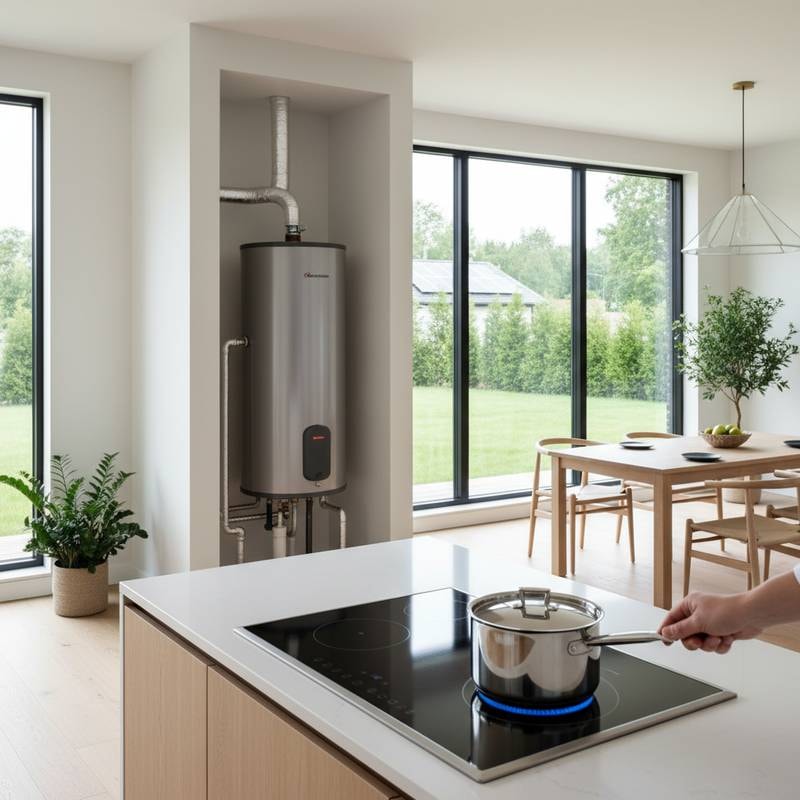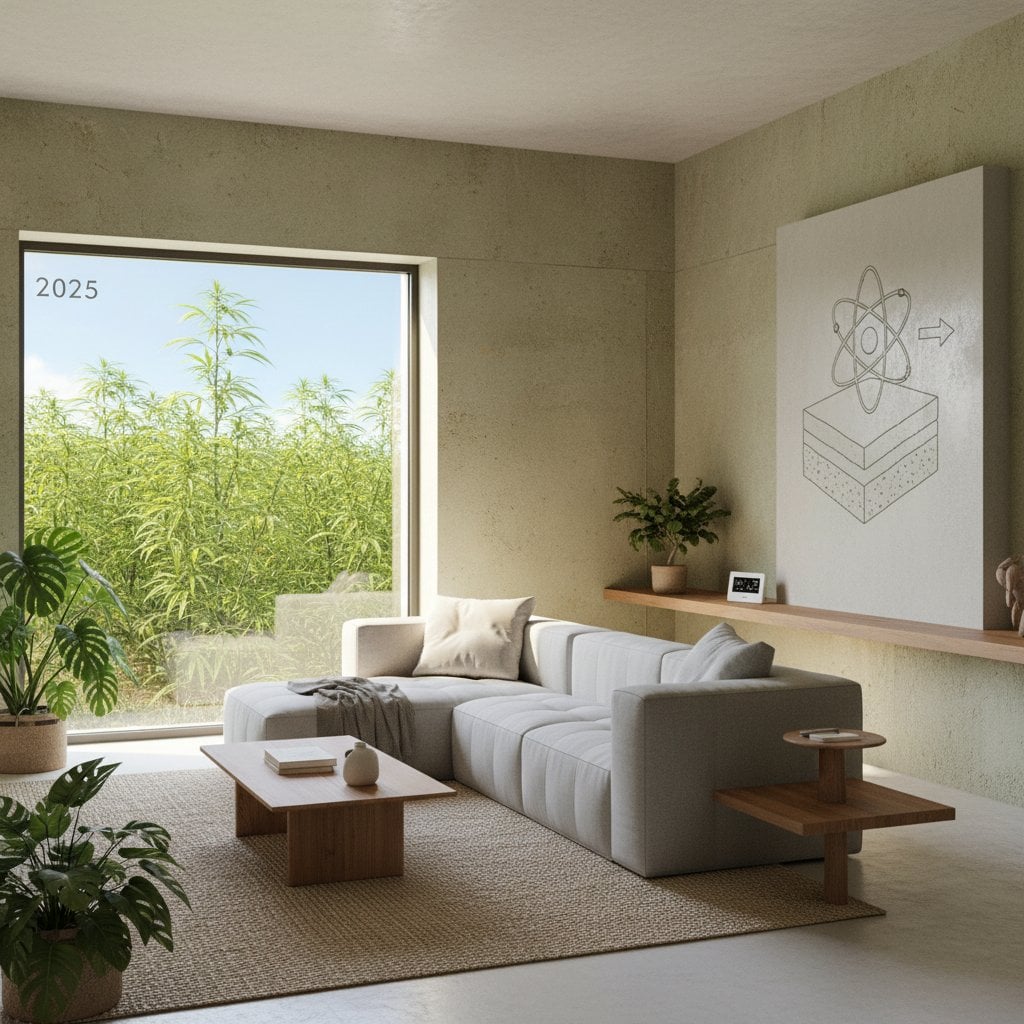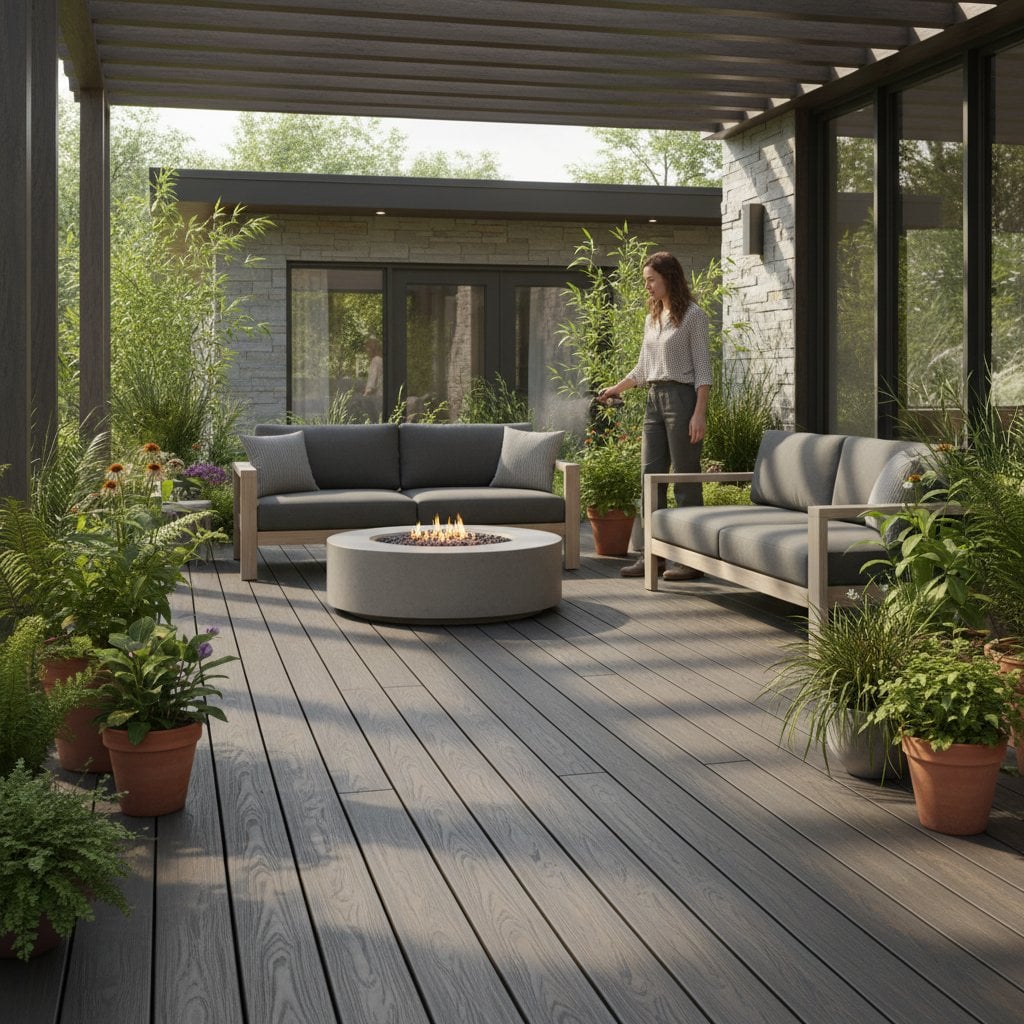Key Points
- Electrifying your home reduces utility bills by up to 40 percent and lowers carbon emissions significantly.
- Efficient electric alternatives to gas systems, including induction cooktops and heat pump water heaters, enhance comfort and safety.
- Substantial rebates and incentives in many regions make these upgrades more affordable.
- Strategic planning with professional guidance ensures seamless transitions without daily disruptions.
Envision a Cleaner, More Efficient Home
Imagine entering your kitchen to fresh air free of gas odors. Your induction cooktop activates instantly, heating pots with precision and minimal noise. In the distance, a heat pump water heater operates efficiently, conserving energy during every use. As a green building expert, I have witnessed homeowners transform their spaces into models of quiet efficiency and cost savings.
Rising energy prices and fluctuating bills affect many households. Electrification addresses these challenges directly. It delivers practical benefits in comfort, financial savings, and environmental protection. Over years of assisting families, I have observed consistent improvements in maintenance, air quality, and overall expenses. The following sections outline a clear path forward.
The Hidden Costs of Gas Systems
Gas appliances provide familiarity, yet they often prove inefficient and costly over time. Combustion processes in heating systems waste up to 30 percent of consumed energy. In humid areas, older gas furnaces and water heaters strain to regulate temperatures, amplifying losses. Indoor air quality declines as well, with gas stoves emitting nitrogen dioxide and carbon monoxide that irritate respiratory systems.
Electrification introduces superior efficiency. Research indicates heat pump systems reduce heating and cooling expenses by 25 to 50 percent. Integrating renewable sources like rooftop solar or community programs elevates your home to sustainable standards. These shifts yield immediate and lasting advantages.
A Strategic Approach to Electrification
Electrification requires thoughtful progression rather than abrupt changes. Prioritize systems offering the greatest returns, then build incrementally. This method minimizes disruption while maximizing benefits.
Upgrade to a Heat Pump Water Heater
Heat pump water heaters draw heat from surrounding air to warm water efficiently. They consume approximately one-third the energy of traditional electric models. Installation costs range from $2,000 to $4,000, depending on unit size and home layout. Savings typically recoup the investment within five years, especially in regions with moderate winters where performance remains strong.
Transition to Induction Cooking
Induction cooktops employ magnetic fields to heat cookware directly, avoiding energy loss to the surrounding area. Water reaches a boil in under two minutes, and the surface remains cool to the touch for added safety. Full ranges cost $1,200 to $2,500, while portable units start below $200 for initial trials. This technology delivers precise control and reduced emissions, ideal for modern kitchens.
Install a Heat Pump HVAC System
When replacing an aging furnace or air conditioner, consider a heat pump that handles both heating and cooling. These systems transfer energy efficiently without combustion. Costs vary from $6,000 to $12,000 based on home size and existing ductwork. Benefits include consistent temperatures, reduced noise, and improved air circulation from the start.
Prepare for Electric Vehicle Charging
Anticipate future needs by installing a 240-volt outlet during other electrical projects. This approach proves more economical than standalone installations later. It also boosts property value, as buyers increasingly seek EV-compatible homes.
Strategies to Enhance Eco-Efficiency
Assess your electrical panel early, as older systems may need upgrades to support increased demand. A qualified electrician evaluates capacity and suggests solutions. Pairing upgrades with solar panels amplifies savings and provides reliability during outages.
Incorporate smart thermostats and timers to optimize energy use, cutting waste by 10 to 15 percent each year. Address insulation and sealing before major changes; these steps retain conditioned air and elevate system performance. Such preparations ensure comprehensive efficiency.
Essential Planning Factors
Tailor electrification to your home's specifics, including electrical setup, climate, and finances. In cold areas, select cold-climate heat pumps for reliable operation in low temperatures. Limited breaker space might necessitate a panel upgrade costing $1,500 to $3,000, which supports safe expansion.
Rebates from utilities and governments often cover 30 to 50 percent of costs. Low-interest loans spread expenses manageably. Combined with reduced bills, these factors deliver substantial net gains. Engage certified green contractors for expertise in permits, ventilation, and load balancing. As one energy consultant noted, full-home audits form the foundation of effective projects.
Broader Benefits for Health and Community
Electrification extends beyond energy savings to improve daily life. Eliminating open flames cuts indoor pollutants, safeguarding vulnerable household members. Heat pumps operate quietly, fostering a peaceful environment compared to traditional furnaces.
These upgrades promote healthier habits and reduce community emissions. As adoption grows, air quality enhances regionally, creating positive collective impacts. Your home becomes a catalyst for wider environmental progress.
Steps to Get Started
Begin with a professional energy audit to pinpoint inefficiencies. Focus next on upgrades yielding the most comfort and savings. Seek specialists in green retrofits via platforms like itsacoolerplanet.com for holistic evaluations aligned with your sustainability objectives.
Electrification represents a wise investment in cleaner air, financial relief, and enduring comfort. Each step advances personal well-being and planetary health.










